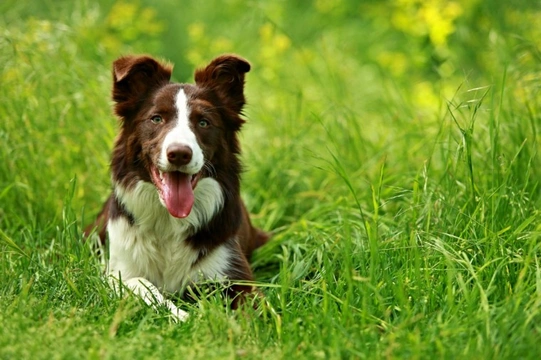
Is slug bait dangerous to dogs?
If you’re a keen gardener or even just a hobbyist, you’ve probably seen how quickly slugs and snails can destroy beautiful plants and flowers, and know that protecting your crops and getting pests like these out of the garden can be a huge challenge.
Whilst there are lots of options to deter and get rid of garden slugs and snails these include natural and organic options, most gardeners agree that slug and snail bait pellets are the most effective approach, even if they don’t match up to everyone’s ethical preferences.
However, if you want to protect your plants but you also have a dog, it is important to make sure that safeguarding the former doesn’t harm the latter! A very natural question then in this regard is, “is slug bait dangerous to dogs?” After all, it is intended to kill slugs and snails.
Slug bait and snail bait is poisonous to dogs, and can make them very ill; and it is important to be aware of the risks it poses and proceed with caution if using such products when you have a dog.
Slug bait contains a toxic ingredient that can poison dogs; and in this article we will talk about what this ingredient is, how dogs might come into contact with slug bait, and how you would know if your dog had been poisoned by slug bait. Read on to learn more.
Is slug bait dangerous to dogs?
Yes, slug bait and snail bait pellets can be dangerous to dogs. It contains an ingredient that is toxic to slugs and snails and this will also affect other animals that ingest it too. In order to attract slugs and snails to eat the bait and so, render it effective, slug bait also commonly includes other ingredients and scents that are sweet, like molasses, to attract slugs and snails; this may attract dogs too.
However, a dog might be harmed by slug bait by inhaling its vapours at close quarters, as can happen if rain causes the pellets to soften and give off gas. The harmful elements of such baits can also be absorbed via the skin.
What makes slug bait dangerous to dogs?
Slug bait pellets usually contain the active ingredient metaldehyde, and this is the toxin that kills slugs and snails, and also the part of the bait that makes it dangerous to your dog.
If you’re buying slug or snail bait and you have a dog, always check what the active ingredient is and the warnings that accompany it, so that you can use and store it properly and keep your dog safe.
How might a dog come into contact with slug bait?
Dogs are most likely to come into contact with slug bait when you’ve used it in the garden, and the pellets that make up the bait soften and infuse the earth when it rains or the garden is watered too. However, they might also come across it in the home if it is stored incorrectly.
What is metaldehyde poisoning in dogs?
Metaldeyhye poisoning is the result of ingesting slug bait containing metaldehyde as its active ingredient, and when your dog eats the bait and so, the metaldehyde, their body turns it into another compound called acetaldehyde. This is a nerve toxin and it causes a number of acute and serious symptoms in your dog, and can prove fatal.
Dogs that have ingested metaldehye will usually become symptomatic very quickly; usually within just a few minutes to half an hour; but it can take up to three hours for symptoms to become apparent in some cases.
What are the symptoms of metaldeyhde poisoning in dogs?
If your dog has eaten slug bait and developed metaldehyde poisoning, some of the symptoms that might alert you to this include:
- Breathing difficulties, including rapid or raspy breathing.
- Cyanosis of the mucous membranes.
- Weakness and tremors, potentially graduating to spasms or appearing like seizures.
- Signs of distress and anxiety.
- Loss of coordination or control of the limbs; potentially unable to balance or stand up.
- A rapid heart rate.
- Hypersensitivity.
- Drooling, nausea and potentially vomiting.
- Loss of bladder and bowel control.
- Collapse and coma.
As you can no doubt tell, the symptoms of metaldehyde poisoning in dogs are all quite pronounced and serious and can be frightening to witness. They also tend to be rapid in onset, and all constitute a veterinary emergency. Metaldeyhyde poisoning in dogs can be fatal, and dogs need very prompt veterinary intervention to stand a chance of recovery, so call your vet immediately if your dog displays any of the above symptoms.
What should you do if your dog comes into contact with slug bait?
If you know or even suspect your dog has eaten or come into close contact with slug bait, call your vet immediately, even if your dog appears fine. Keep the packaging of the slug bait in question as your vet may need to use this to contact the manufacturer or a poisoning helpline in order to get assistance with your dog’s treatment.



